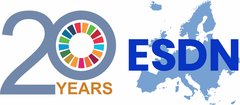PARTICIPATION
Tuesday, 18 August 2020
In 1996 The Estonian Commission on Sustainable Development was established. The Commission was led by the Prime Minister and co-chaired by the Minister of Economy and the Minister of Environment. The Commission was composed of 28 experts in the field SD, including representatives from government (6), parliament (5), governmental institutions (5), academia (9), business (1) and NGOs (2). The objectives of the Commission were to advise the Government on issues related to SD, develop different sectoral options and comments, present them to the national and local governments, and submit proposals for new legislation.
At present, the Commission consists of 22 representatives of different non-governmental organisations. The Strategy Unit in the Government Office acts as the secretariat of the Sustainable Development Commission. The NCSD helds regular meetings on crucial SD topics and forwards the result of these participatory discussions to the government. It also organises various events like SD conferences and ad-hoc events in crucial SD issues. In all these participation mechanisms the role of the NCSD is to increase ownership and serve as an information exchange platform for stakeholders. In 2016 NCSD launched a comparative analysis of Estonian Sustainable Development Strategy “Sustainable Estonia 21”, which gave answers on how much the Estonian strategy is in compliance with Agenda2030.
In April 2018, the Estonian Coalition for Sustainable development was founded by active stakeholders who want to do closer cooperation in implementing the SDG-s. The government Office and Ministry of Environment also joined the coalition. The Coalition contributed in creating a web-based platform for SDG implementation kesta.me (https://kesta.me/ (est)). The Coalition is aimed for more practical issues – concrete cooperation projects and joint actions.
Since the SDGs are implemented on a national level through policymaking then it is important to have the SDGs integrated on a strategic level. In Estonia, all of the government level development plans have to be linked to the SDGs. Since 2018 we have been drafting long term strategy “Estonia 2035” which also takes into account the SDGs. The involvement process of Estonia 2035 has been very broad and different stakeholders and civil society have got the chance to influence the outcome and state the most important future goals.
